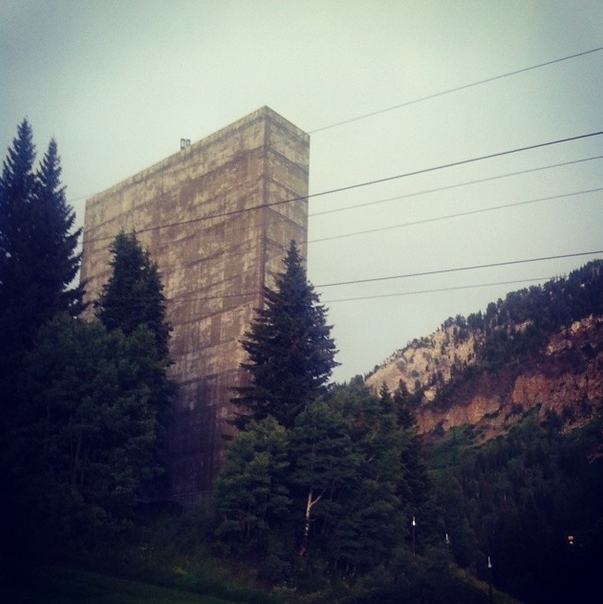In August, along with many of my TAG compatriots (William Robinson, Pierson Browne, Jason Begy, Jennifer Whitson, Carolyn Jong, Joachim Despland), I travelled to ‘scenic’ Snow Bird Utah for the 2014 edition of the Digital Games Research Association’s (DigRA) annual conference. While this was my first time attending DigRA, I knew it by reputation, and followed the proceedings ofthe Art History of Games Summit during the 2013 edition on social media.
I was surprised to find that attendance at the conference was rather modest for what is supposed to be Game Studies’ largest academic organization. This is due in part (according to many who attended), DIgRA’s move to an annual, rather than a Bi-Annual format, as well as the remote location. Although the conference lacked in size, it still seemed to possess a rather broad scope. Presentations ran the gamut of formalist concerns (apparently the ludolologist school is still thriving), studies of fan cultures, game development, etc. As a scholar who has done work in game studies, I found some of these conversations stimulating, but I was disappointed by the lack of representation of games from more artistic disciplinary perspectives.
DigRA 2014 hosted two summits, which ran concurrently with other conference presentations: The RPG Summit, and the Well Played Summit. The inclusion of the RPG summit seems to be borne out of what appears to be a feeling of marginalization on the part of scholars who are studying Role Playing and Tabletop games. This was mirrored by flyers that were distributed for a new journal in Analog Game Studies. Clearly those that study analog games are pushing towards having digital game scholars see merit in their work. The Well Played Summit was a bit of a departure from the traditional conference presentation. Here, presenters had to give a live play through of the particular games they chose, while providing live critical commentary.
Another feature of the conference was the Blank Arcade. Which was intended to be an exhibit of games submitted by student members of DigRA. I didn’t spend a great deal of time there (as it was only up for a single day of the conference). While some of the games seem to hold promise, the Blank Arcade itself seemed to be hastily put together. Banquet tables with laptops, in a hotel conference room. As someone with a history of curating games in galleries, institutions and alternative spaces, I can’t help but think that there was a lack of commitment on the part of the organizers to forefront the role of research creation in the discipline, and how that could have a real impact. That is to say, if the Blank Arcade were to become a regular feature of the conference, having someone with the experience of putting exhibits together would greatly benefit it’s acceptance in larger scholarly pursuits of game studies.
To be quite honest, there was very little at DigRa 2014 that resonated with me as a researcher. There were few political interventions, and a large focus on industry. And while I have colleagues that do not agree with me, I feel we are the better as a field when we are positioned at a distance from industry. It allows us to be critical in a way that partnerships can often diminish. However there were several presentations that I found to be quite remarkable.
Ryerson University’s David Murphy gave an interpretation of Minecraft’s red stone wizards (players who build large physical computers within Minecraft worlds) as a practice he called “slow programming”. Much like those who are into “slow food”, slow programming requires a great deal of slow prepatory work, and watching these machines actually compute information, is also quite slow. York U’s Emily Flynn Jones gave a presentation on the phenomenon of Kusoge games, a subculture in Japan centered on making and playing terrible video games (Kusoge translates roughly to “shit games”). Her work to recuperate these games, and to sort of push up against the notion of a canon in gaming is one I very much appreciate, and mirrors my passion for work I do in my own projects like the Ghost Arcade. Christoper Paul gave a compelling counter-argument to the vilifying of the free-to-play phenomenon, presenting so rapidly and energetically it was hard to disagree, mostly because the room found itself struggling to keep up. Finally a shout out to TAG’s own Pierson Browne, who gave a rousing talk on the trouble with the representation of race in Assassin’s Creed.
My own work seemed to be received well. I presented my Master’s research on the Sega Dreamcast in the context of a post-consumer platform study. That is to say, examining the platform after it has been abandoned by retail markets. Mia Consalvo and Zoya Street also presented platform studies of the Dreamcast through their own lenses: Mia through the marketing of the console, and Zoya through the worlds designed in Dreamcast games. I think that together we made a very strong case for the importance of a more ecological, rather than singular approach to platform studies as a field of inquiry.
As with most of my conference experiences, I found that the best converations happened outside of any particular session. I had the pleasure of meeting many scholars who I’ve followed on social media for some time, and it was wonderful to engage them in one on one conversations. Which, more than simply presenting my research, was the primary reason I enjoyed the conference.
***final note. Snowbird was a striking and beautiful backdrop to the conference, the Cliff Lodge (pictured at the top of this post), was a wonderful, Brutalist building, which reminded me of so much of Montreal’s iconic architecture… and the ground squirrels were friendly, if a bit bitey.


